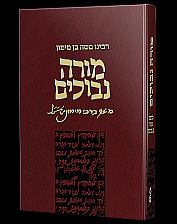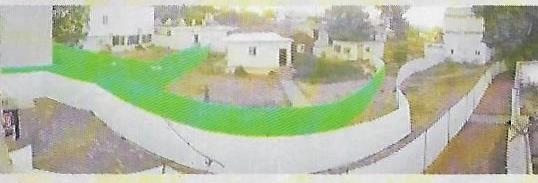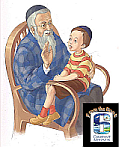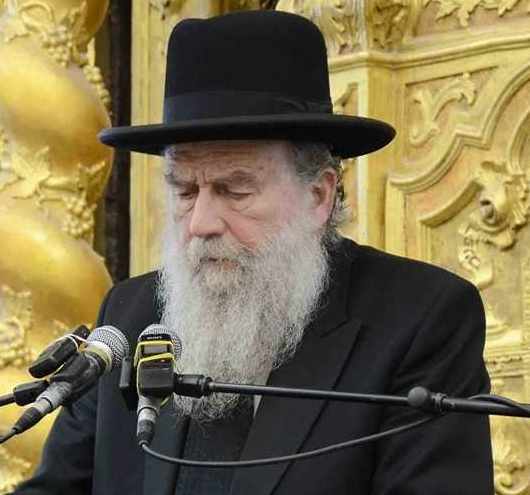  |
|
| ||||||
This Google Custom Search looks only in this website. Moving on After the Pandemic
The lesson which must prevail must be tested by the uprooting of the causes of the epidemic, so that its continuation should embody an anathema to evil and with hatred towards wantonness and animalistic baseness. The Torah states, "Regarding the matter of Kozbi bas Tzur, prince of Midian." This is followed by the statement in the posuk, "And it was after the plague..."
We now find ourselves (in Israel) at that interim point between the settling down of the harsh epidemic and the fear of a second wave of another outbreak. The first chapter ended by easing us rather quickly into the old routine, "life returning to its regular channels." But this routine, precisely, is replete with pitfalls. The street has not changed in the least; the yetzer hora did not enter in quarantine for even a short period but waited for us outside, in the deserted street, lying in ambush at our doorstep, where "sin crouches in wait."
When the administration of the Yeshiva Gedola Kinyan Daas in Beit Shemesh understood that the yeshivos would not be opened as before, they began feverishly looking for new quarters suitable for the new government directive of study in isolated `capsules.'
They approached, both directly and indirectly, dozens of places, receiving an identical reply from each one — negative. In the end, they came to "Midreshet Shadmot Mechola" which agreed to house them. This site had several advantages: it overlooked the spectacular eastern vistas of the Jordan River; it was quiet and serene, with luxuriant green lawns and was distanced from all habitations. In short, it was gevaldig.
The next step was to adapt it to the strict rulings of the Health Ministry and obtain the necessary government approvals.
Notes from a shiur given on 1 Adar I, 5765, in which HaRav Moshe explained the fundamental relationship of a person's attitude towards Shabbos and the Mishkan/Mikdash. Includes a very interesting commentary and explanation of Mizmor Shir LeYom HaShabbos (psalm 92) and a parallel psalm about the Beis Hamikdash (73).
The Mishkan is given as the mitzvah, "Ve'osu Li Mikdash veShochanti besochom." This is a mitzvah like any other. It falls upon all Israel.
Why is this mitzvah dependent on nidvas leiv? We do not find this in any other mitzvah. Generally what we have to do does not have the additional requirement of being benidvas leiv. Rashi explains that the concept of nidvas lev is "loshon nedovoh vehu rotzon tov." Where else do we find a mitzvah that requires good will? We have to do the mitzvas, according to our obligation. This mitzvah is dependent on good will, and if someone does not have it, he need not fulfill this mitzvah.
Why this special requirement in this specific mitzvah?
From Our Archives
A Concept that Must be Changed
by Mordecai Plaut
The vile suicide attacks last September 11 which brought down the twin towers of the World Trade Center along with another 47 story building, stunned the United States and changed the way it and much of the world thinks about the future course of events. Yet it has now come to light that American security services had pointed to the possibility many times previously. Nothing was done; the scenarios were not even thought about to prepare a reaction.
According to a report from the Library of Congress dated September 1999, to the National Intelligence Council of President Bill Clinton, a "suicide bomber belonging to Al Qaeda's Martyrdom Battalion could crash-land an aircraft packed with high explosives into the Pentagon, the headquarters of the CIA or the White House."
An FBI agent in Phoenix, Kenneth Williams, in a memo dated July 5 of last year -- barely two months before September 11 -- noted that several Islamic radicals in his area were enrolled in flight schools and seemed unusually interested in security arrangements at airports. Though none of the radicals surveyed in the memo had anything to do with the terrible hijackings, Williams urged the FBI to do a nationwide review of all flight schools to see if Al Qaeda was up to something.
The Nozir's Holiness: A Shmuess For Parshas Nosso
by HaRav Sholom Schwadron zt'l
A Practical Result
Chazal tell us that, "Whoever sees a sotoh's disgrace should separate himself from wine [by vowing to become a nozir]." Our master and teacher, HaRav Yehuda Leib Chasman zt'l noted that the words "whoever sees" make it clear that this recommendation is addressed to everyone, to great Torah scholars as well as to ordinary people. "Disgrace" here refers to the [public] shaming of the sotoh [prior to her drinking the water], whose purpose [besides encouraging her to confess] was to serve as a deterrent to others, as the posuk (Yechezkel 23:48, cited by the gemora in Sotoh 7) says.
The Mabit says that if a person witnesses a sotoh's disgrace, he is moved to go and study mussar and his feelings will be aroused. Nevertheless, it is imperative that this arousal have some concrete expression, which is why Chazal advise becoming a nozir. This was Chazal's meaning when they said, "Wherever a person's deeds exceed his wisdom, his wisdom will last" (Ovos 3:9): When a person is moved by learning mussar, he needs to find some practical way of sustaining his arousal, otherwise it will fade away. He must do something that corresponds to Chazal's advice in the case of sotoh to "separate himself from wine."
Our master and teacher said that the words "whoever sees" even refer to a great tzaddik such as the Chofetz Chaim zt'l. While we know that the Chofetz Chaim was a very great tzaddik, we still have no idea of how very great he really was. Someone who learned in Ponevezh Yeshiva told me that once in a vaad, HaRav Yechezkel Levenstein zt'l, offered proof that the neshomoh continues to exist after death. He testified that as an avreich, he himself had witnessed a neshomoh coming to the Chofetz Chaim to request a tikkun -- the Chofetz Chaim was that great!
Keeping the System Clear
by R' Zvi Zobin
This is not a subject which is usually discussed in public. Because it is so elementary [and alimentary], it is often overlooked, yet it can be the cause of many learning and emotional disturbances.
The alimentary canal starts at the mouth and terminates at the anus. Its main function is to process food to enable nutrients in the food to be accessed by the body. It also provides an environment for healthy bacteria which produce important dietary supplements.
The digestive path is about nine meters (30 feet) long. Food enters the mouth, where it is chopped by the front teeth, ground up by the back teeth, mixed by the tongue with saliva and then swallowed. The food passes down the esophagus, through the cardiac sphincter muscle to the stomach where it is ground and mixed with digestive juices until it becomes a liquid mass. Then it passes through the pyloric sphincter muscle to the duodenum, jejunum and the ileum (the small intestine -- about 7 meters 21 feet long and about 2.5 one inch wide), where the food is mixed with more digestive juices and where nutrients in the food are absorbed.
EARLIER EDITORIALS
A Mission to Spread
Daas Torah
Looking for the
Best in Yiddishkeit
The Immorality
of Palestinian Combatants and Noncombatants
|
||||||




.jpg)


